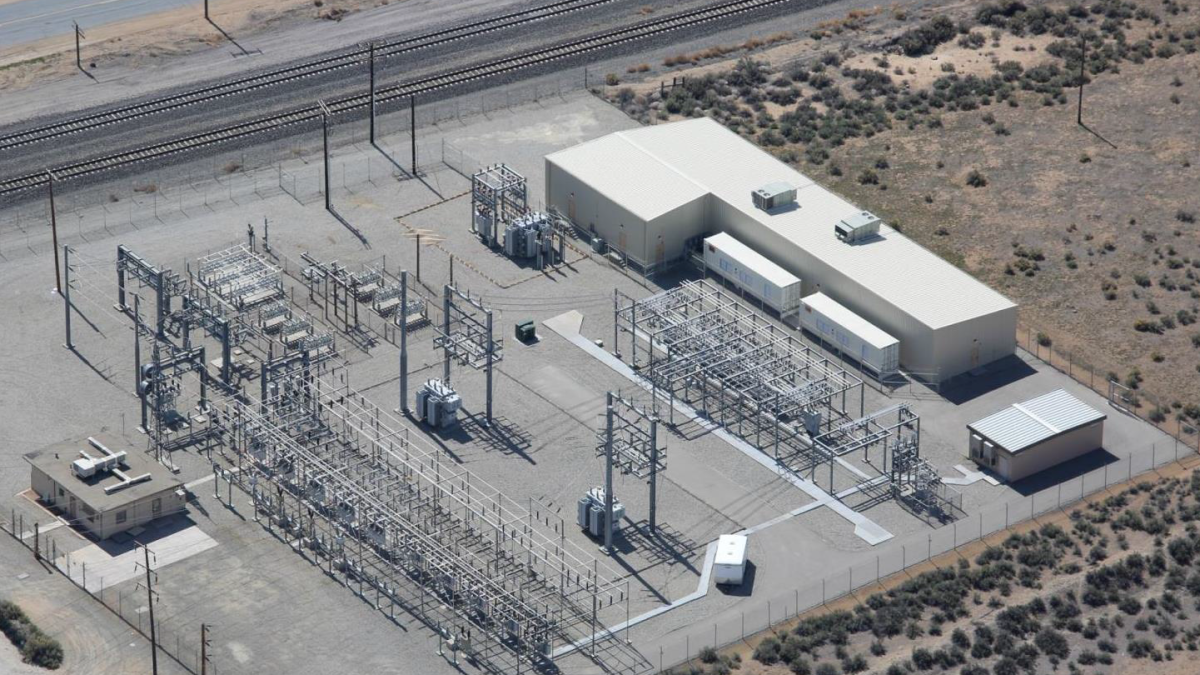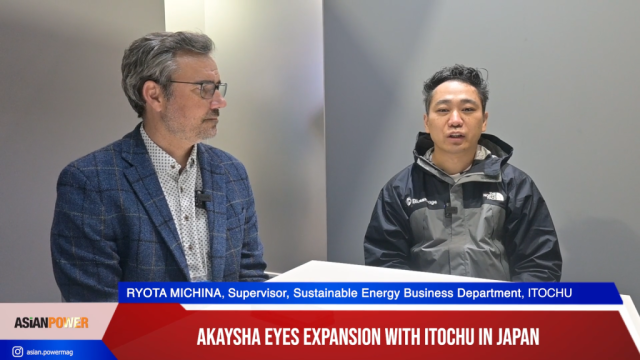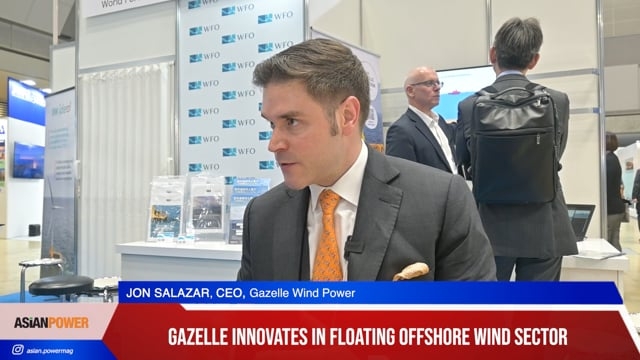
Scaling up India’s storage capacity will be slow: IEEFA
India will need 27GW of grid-scale battery, the Central Electric Authority said.
In Delhi alone, the required storage capacity for renewable energy stands at 600 megawatts (MW), which is a huge jump from its existing capacity of only 10MW. As battery projects in the country are still underway, ramping up its storage capacity will likely be slow, putting a major hurdle in India’s 450-gigawatt renewable ambition that requires 27GW of storage.
Asian Power sat down with the Institute for Energy Economics and Financial Analysis Energy (IEEFA) Economist Vibhuti Garg to tackle the RE+ approach India should adopt.
What does India’s shift to renewable energy mean for the coal sector and how is this affecting coal plants?
During the months of mid-August to early November, there has been some coal shortage crisis happening in China, as well as in India. India also witnessed the electricity demand dropping in the financial year 2020 and during the early months of 2021. As a consequence, coal stocks in India hit a new record high of 132 million tonnes at the end of the financial year 2021, exceeding the average of 80 million tonnes in the previous five years. There was an expectation that India might witness another COVID lockdown, and as a result, the power plants were playing safe. They feel that they did not need to increase the coal stockpiles at their end because the plant load factors (PLFs) would go down and they won't need or there won't be enough demand to increase the generation.
In September and October 2021, India witnessed increased coal shortages with the majority of plans with critical coal supplies. The government realised that and sprang into action. They asked captive mines to ensure maximum use of their mines and supply power to coal-powered plants. Further, the government ramped up production and even uptake of coal by increasing the rate for coal transportation. India witnessed an increased energy demand, but supply was becoming a bottleneck because of the extended monsoons and uptake. By the second-third week of November, the situation has improved and, fortunately, the temperatures have gone down in the northern part of India leading to reduced demand because the air conditioning load has substantially gone down.
With all this crisis, few states like Punjab, Delhi, and Maharashtra, agreed that they will buy power from imported coal-based plants to meet the energy deficit in their state and import fuel. Further, there is a push for increasing domestic coal production, but there are limitations given that there is no global financing for funding any new coal mines or coal-fired power plants.
If you now compare renewable energy with the cost of coal-based power plants, they are far cheaper, but definitely, there are grid integration costs involved. The batteries are still expensive for Indian consumers and the government has come up with certain production incentives. SECI, the Solar Energy Corporation of India, and NTPC Limited are also coming up with big energy storage projects. We are expecting more players to enter the market and more storage capacities to be developed. We will see a downward trajectory in energy storage prices in India, the same as what we are seeing in other parts of the world. We are hopeful that, in the future, storage or other newer technologies, like green hydrogen industries will have a much bigger role to play.
Can you tell us about the companies that are investing in storage and their plans?
So far, we just have a very small-sized battery plant of 10MW from Tata Power in the state of Delhi. The Delhi power minister talked about a plan to create a storage capacity of 600MW daily in the form of power banks. This would be a huge setup from the city's existing battery storage capacity, which is the only existing capacity in India. Then we also have Tata Power that has bagged another big storage project in the city of Leh, in the newly formed union territory of Ladakh, which comprises 50MW hours of storage capacity. It's going to be co-located with 50MW of solar capacity and this capacity is likely to be commissioned by 2023. Starting with 50MW hours, Tata Power has planned 13GW hours of grid-scale battery storage in Ladakh.
We also have large players like Reliance, Adani setting up huge Giga factories in India for battery storage. But it will take some time. It won't be in the next year itself. Reliance has acquired a lot of companies for both solar module manufacturing, and even battery storage companies, which will help them to access these newer technologies. Till the time domestic manufacturing picks up, we will have the Indian players tying up with companies in China and other parts of Asia for import. It's gonna be a mix for a while and then maybe, with all these factories becoming operational, we'll have more domestic solar modules and storage manufacturing happening in India. For the cost of battery storage, I can tell you in rupees per kilowatt-hour (kWh) what is the likely price if you combine solar with four hours of battery storage. So, the tariff turns out to be INR6.8 to INR7 per kWh, which is on the higher side.
Just on raw solar, how much is that at the moment without the battery storage?
Solar tariff is now ranging between INR2.2 to INR2.4 per kWh.There was an imposition of safeguard duties, which was done away with, effective only until July 2021. Then, there will be the imposition of Basic Custom Duties from April 2022. So, the developers are factoring in the impact on the tariff of those duties when they are bidding. The module costs have gone up in the last five to six months on account of COVID supply disruptions. Such high module costs would be temporary. It is expected that the cost may go down to INR1 per kWh by 2030 for solar because of the efficiency in technology and then with the domestic manufacturing picking up will drive the costs down further. We'll have a downward trajectory, both for solar and the battery prices going forward.
More importantly, with a lot of global financial institutions (FIs) announcing fossil fuel exit policies, there is a big pool of money available. India will be able to access finance at lower costs, which is also one of the big costs for India. Now, if you compare it to the Western world, the cost of finance is much lower, but global players are interested to invest in India as it provides higher return opportunities.
How achievable are India’s RE targets and what can India do to speed up their transition towards clean energy?
Quite achievable. The road ahead is very difficult, but India has made huge progress and provided the right set of policy signals. We shifted to the reverse bidding auction mechanism for these market reforms to guide the growth in renewable energy. And with the cost economics improving, any additional new demand is being seen to be met through renewable energy. We have seen an increasing decline in new coal-based capacity being set up. It looks like a lot of companies are now on board to help India achieve these renewable energy ambitions. I would say, these decisions are also being made because the board is also asking the companies to reinvent themselves and shift to clean energy to make a profitable business given that the coal-based assets in India were running at very low PLFs. The commercial viability of coal-based projects is becoming a big question mark, and the existing projects are incurring huge losses. Some of these assets around 40GW are, in fact, stranded, with an investment of US$40b to US$60b as stranded coal-based capacity in India. The board decisions are driving these companies to take the plunge and diversify themselves, adopting these cleaner technologies. As I said before, given that global finance is shifting towards these cleaner, newer technologies, raising any debt for new coal-based power plants or mining is becoming increasingly difficult. The renewable energy target looks ambitious but likely that India will achieve that target if we see a continued increase in energy demand growth.
Do you think the Adani mine is really going to go ahead and come on stream or that it might not actually happen? Is the Adani mine proposed in Queensland to provide thermal coal?
Whilst Adani has been making huge targets for renewable energy generation, unfortunately, they do have some of these coal-based assets in India. I believe the assets in which they’ve already invested so much, might continue. There was huge back and forth with a lot of FIs backing out of that project, including a huge pressure on the State Bank of India. None of the private FIs in India is supporting any new coal-based power plants. To some extent, I believe Adani mine is already functional so it might operate. But if there is less and less demand for coal, I don't know what they will do with that coal mine.
If Adani may want to build that asset further, there'll be very few off-takers. One way or the other, maybe not immediately, but a few years down the line, that asset is likely to get stranded.
They were planning to use that coal for a power plant to supply power to Bangladesh. But I think Bangladesh has also realised, and they are further renegotiating power from that coal-based power plant because it's expensive. Whilst that power project is built on a government-to-government agreement, approval of such high tariffs will face a lot of pressure going forward and there will be increasing pressure to reduce the cost. It's just not worth importing that coal from Australia, firing it in India and then supplying that power to Bangladesh. Consumers do not have that appetite to buy expensive power. And yes, in the long run, it's not viable to sell power from that project. Going forward with all the net-zero commitments coming from large parts of the countries, they will increasingly have a big issue in importing coal, not only to India but any other country.
The IEEFA said in its reports that financing is important for India’s decarbonisation goals. How can India attract more financing or lending for projects toward this goal?
India needs to strengthen its green industrial policy. As part of restarting the economy, we were expecting the government to invest in India's capacity to manufacture for the green energy ambition. Now, increasingly, huge factories are being set up for electrolysers because green hydrogen has again been touted as one of the big new areas as clean energy alternatives. India is coming up with huge state-level policies to boost more electric vehicles adoption and storage. Further, India needs to build and invest in large scale RE grid integration. India needs to start investing in the systems of tomorrow.
To unlock finance, India already needs to have a stable policy environment. It needs to work on resolving policy and the legacy issues to attract the FIs to bring in more capital to the deflationary domestic renewable energy sector. This would also involve undertaking some of the market reforms, like time of day pricing etc. We need system-wide reform to improve the financial health of the distribution utilities because this will enable them to transition to the real-time market to meet energy demand. Very recently, the Ministry of Power announced another concessional loan in distribution companies to meet their working capital requirements so that they are able to make payments to generators. The government has come up with financial support measures to help discoms tie-up with the current crisis. In the past as well, the government had to bail discoms out of the financial crisis. We really need to improve the operational and financial health of the distribution company for India to achieve its renewable energy target.























 Advertise
Advertise







